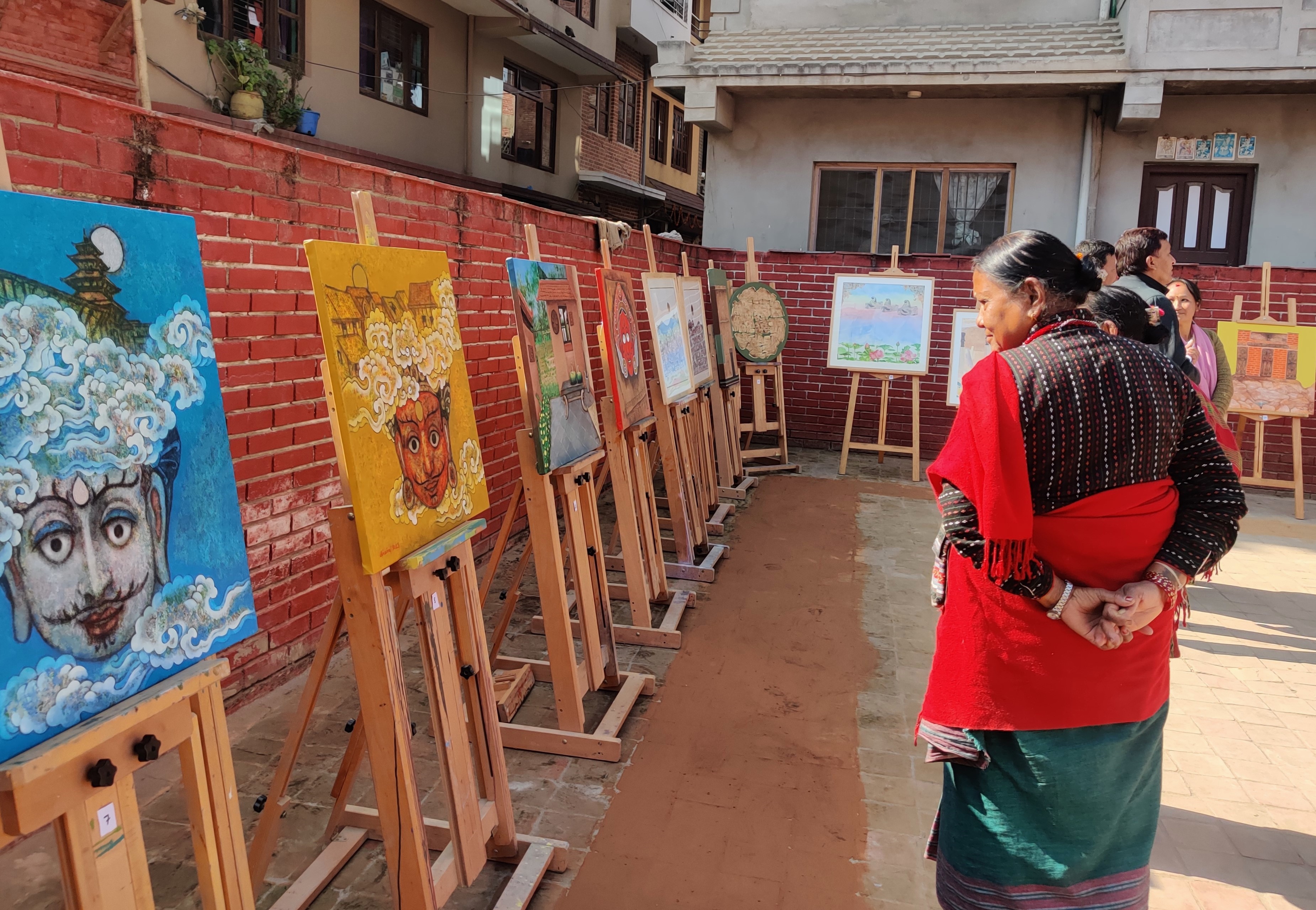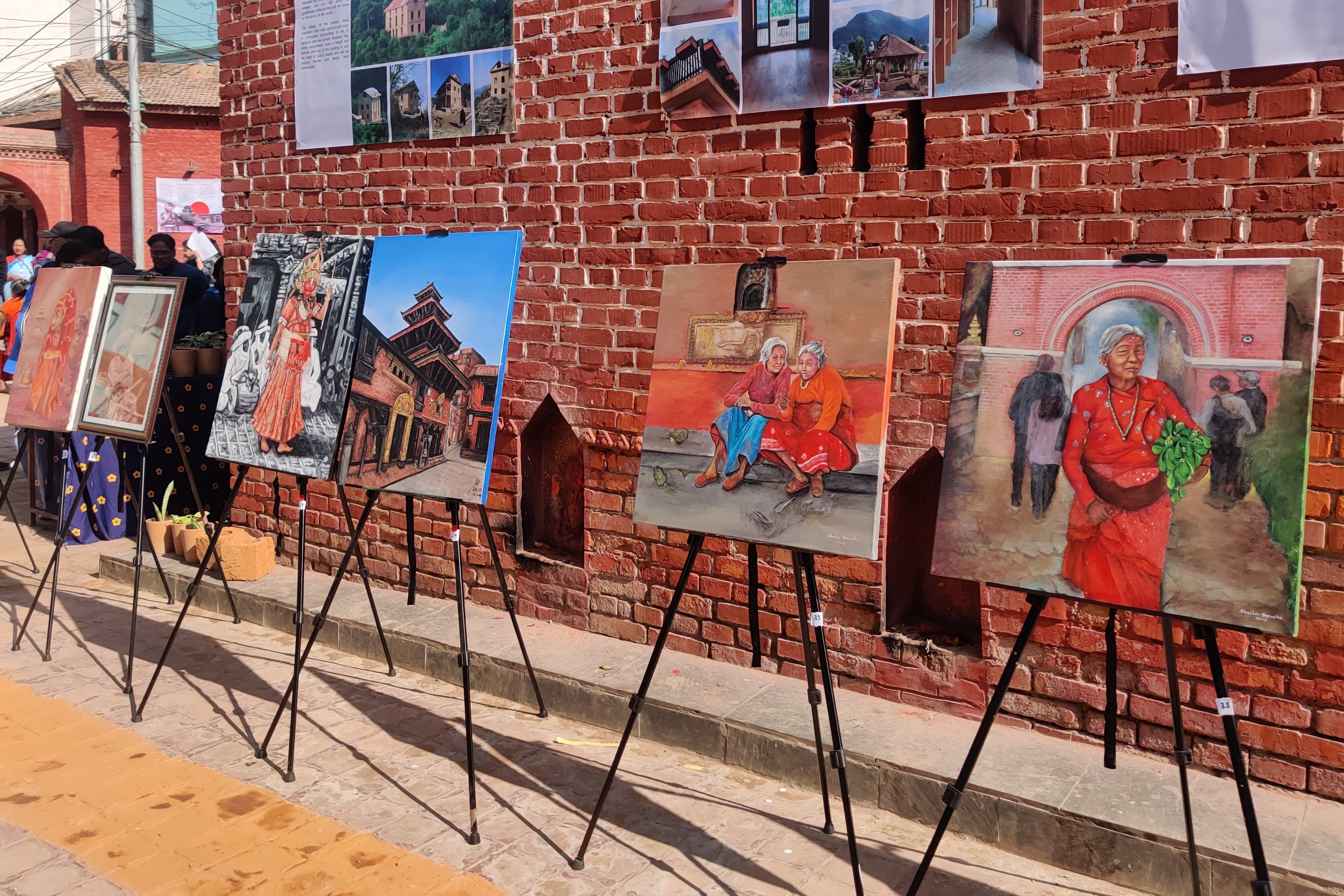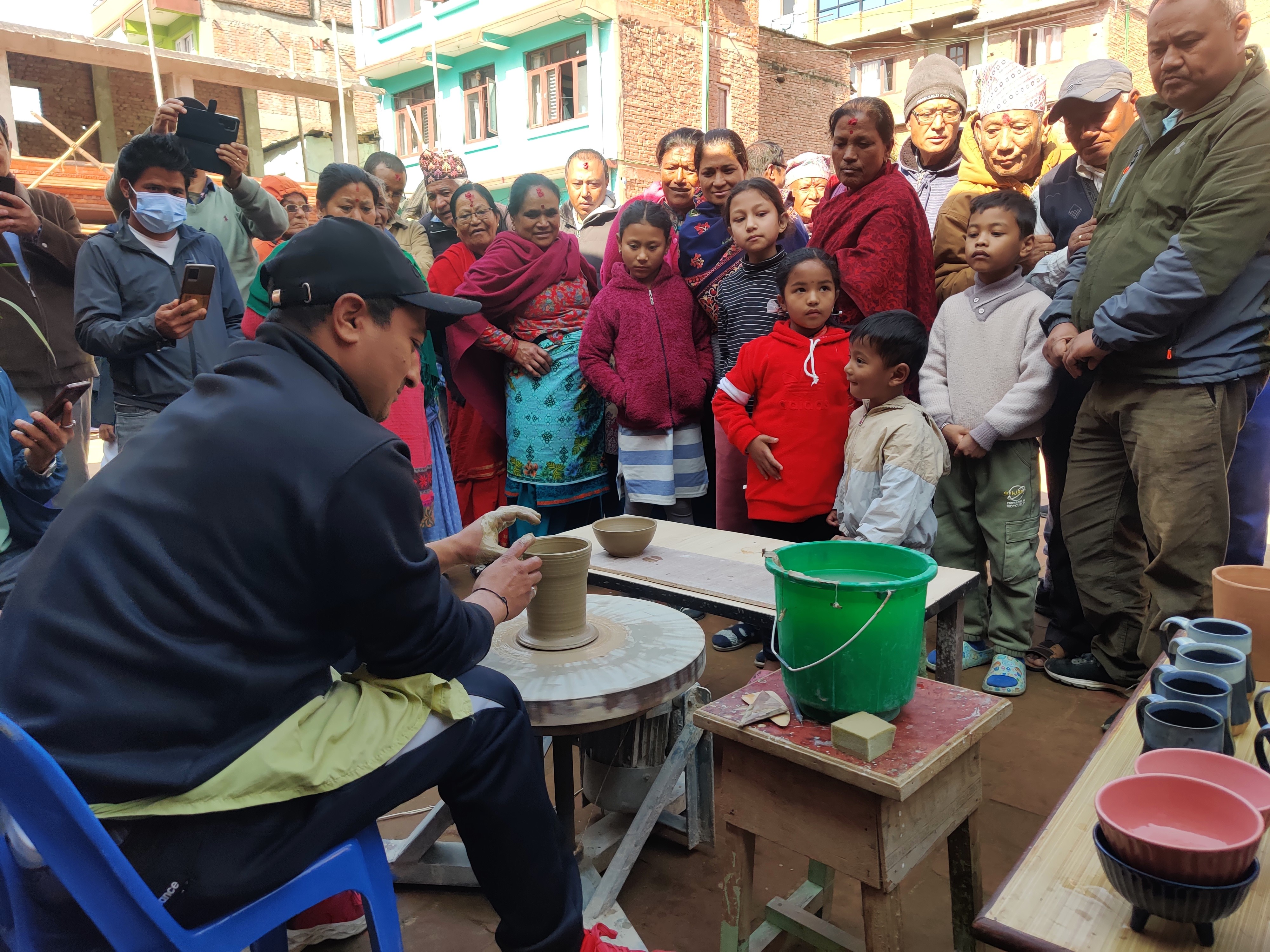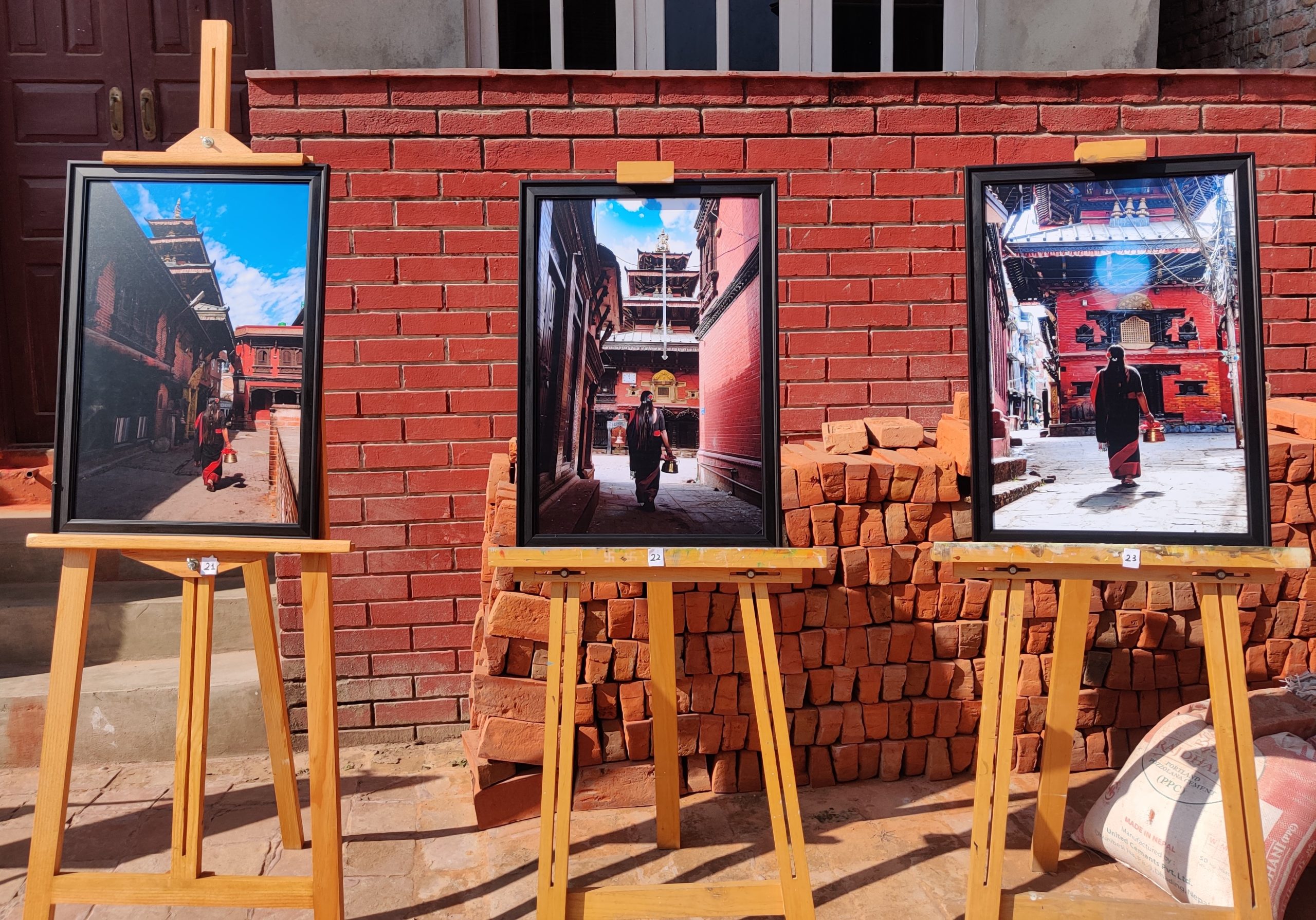For anyone travelling in and around the Kathmandu Valley, the three Durbar Squares in Kathmandu, Bhaktapur, and Lalitpur stand out as their preferred destinations. These ancient Newa settlements, which are part of UNESCO’s monument zone areas have been instrumental in tourism in Nepal.
However, some other Newa settlements in the valley are overlooked and remain hidden from tourists. Locals and stakeholders argue that these areas equally merit exposure and recognition among both local and international tourists.
Just about five kilometres away from the Patan Durbar Square area is Harisiddhi. Locals of the area believe this to be one of the oldest Newa settlements in Nepal.
Dharma Govinda Maharjan, 73, says Harisidhhi deserves due credit for various reasons. He says this Newa settlement had occupants even before the origin of modern calendars.
“The Newa settlements here predate the start of the Nepali calendar (Bikram Sambat) by 941 years, tracing its history back to a period before the Lichhavi era. An inscription at Tangaa hiti, dating from Jaydev II’s time, cites a historical conflict over irrigation and water distribution in areas like Minnath and Gairighara, indicating the settlement’s longstanding presence,” says Maharjan.

Maharjan, currently pursuing a PhD, is also working on a book centred on his research of the cultural and historical aspects of the Harisiddhi and around the Harisiddhi Temple.
“Harisiddhi, named after the goddess Harisiddhi Bhawani, holds historical significance in the region. The temple itself dates back to the Lichhavi era, with Amar Malla being credited, along with other Malla kings, for its construction and subsequent renovations,” he says.
The potential of its cultural heritage extends to its dances too, with the Harisiddhi Naach being one of the oldest dances or the first mask dance in the country.

“Harisiddhi Naach or Jala Pyaakhan, performed three times a year during major festivals such as Yomari Punhi and Fagu Purnima, signifies the beginning and ending of the three-month festival. Additionally, during Nawami of Dashain, the dance ritual serves as a tribute to the various forms of the goddess. These performances stand out as key attractions,” he says.
He also finds it fascinating how ancestral intelligence is reflected in the architecture of temples around the settlement.
“The Harisiddhi Bhawani Temple’s design with the four-storey structure is rare. That is not all, the town also had our entrances (dhokas), four courtyards (choks), and four guthi, forming a square layout as indicated by inscriptions,” he says.
Understanding the importance of promoting a place like Harisiddhi, Basanta Raj Shrestha, the founder and promoter of Harisiddhi Art Mela, says a place like Harisiddhi along with other Newa settlements on the outskirts of Kathmandu now deserves exposure.
Art for promotion

That is what he and the organisers of Harisiddhi Art Mela aim to achieve. The Harisiddhi Art Mela held last week celebrated the rich cultural and social heritage and local traditions of this Newa settlement. This celebration involved the participation of young local artists alongside the engagement of the local community and other organisations such as Earts and Chiva Chaitya together with the Rotary Club of Yala.
The festival, according to locals, acted as a platform that highlighted the essence of arts and culture, emphasising the stories and significance behind them. According to Suniva Shrestha, serving as the assistant coordinator and an artist herself, 23 artists with six local artists enthusiastically participated in showcasing different elements of Harisiddhi.
“Settlements, as a diverse topic that we centred the event around, offer various interpretations, especially when highlighted through art,” says Suniva. “These images encapsulate not just the physical structures but also the essence of culture. Every artist had their unique perspective and interpretation of Harisiddhi’s heritage and its sustainability.”
The event showcased not just art but also various handicrafts, offering a selling point for these creations. However, the focus extended beyond mere merchandise. The festival also focused on infusing art with meaning, weaving stories that aimed to bridge the gap between the old and the new.
But why did they choose art to promote the settlement and its culture? Suniva says artists possess a unique ability to add depth and significance to their creations.
“They can visualise narratives that capture the essence of both traditional and contemporary elements,” she says.

“Even after the earthquake, the human spirit continued to resonate but we have lost many elements of society and culture. Through creativity and storytelling, we have tried to bring together elements that might not have been possible otherwise,” she says.
Suniva said she visited Harisiddhi in November 2023 and noticed how close and interconnected the community was. While the locals told her things are not the same, she feels there is a great connection between the people.
“I live in Satdobato, an area that has become highly commercialised and people are disconnected. So, to see a condensed community, living so closely together was a key learning,” she says.
Local artist Sani Krishna Maharjan also believes art, activism, or community initiatives can play a role in the preservation or promotion of Harisiddhi’s culture and sustainable living.
Threats or potential

The concept of community living once thrived, creating a profound connection among people in this close-knit society, recalls Dharma Govinda.
“In earlier times, there was a sense of community cooperation and if one wanted to build a house, we would need to give wages just for sikarmi (woodworkers), dakarmi (bricklayers) and a few of the wage workers. Else all other roles would be fulfilled in voluntary participation,” he says
However, this communal harmony has declined over the past few decades.
“The intrusion of westernisation in Newa settlements has brought about more disintegration, altering the traditional fabric of communal living.”
Traditionally, houses were constructed using kachhi itta (sun-dried mud bricks). After the earthquake in 1934, most in Kathmandu valley transitioned to pako itta (fired bricks), signalling changes in construction techniques.
“In recent times, with increased market exposure and business activities, there’s been a gradual shift in the lifestyle of these communities, indicating a broader trend of evolution and adaptation in these historical settlements,” he says.
That change has also been evident in the local tradition and culture. Previously, the masked dance was held for three months. However, societal changes have made it challenging for people to maintain and practice these traditions as consistently as before.
But all is not lost they say, there are many elements of Harisiddhi as mentioned that can be turned into potential ways to attract tourists.
Dharma Govinda says that the aesthetic beauty and uniformity in various facets of these Newa settlements remain appealing for tourism.
“The recent attraction to the traditional way of building houses can be a plus point. But people need incentives,” he says.

Dharma Govinda believes in the importance of promoting Newa settlements by focusing on community living. He says because humans are naturally social animals, it is crucial to create harmonious living spaces.
“The aim is to integrate this idea into communities and showcase sustainable living, a concept that appears to have disintegrated over time. Art is chosen as a medium to express and highlight these values, he says.
However, despite being close to the Durbar Square areas, Harisiddhi has not received the recognition many feel it deserves.
“The communities were primarily of sub-communities such as the Maharjan, Jyapu, Napit, and Kasai, who remained primarily engaged in agriculture. This might have led to a relatively lower exposure to markets and businesses, resulting in a higher percentage of illiteracy or vice versa,” he says.
However, the evolution of Newa settlements in terms of living standards and construction methods reflects a shift over time. “And the distance to the durbar square areas can also be used positively.”
Moreover, as the Harisiddhi Ary Mela looked forward to connecting past and present, it also held different workshops for the children of both public and private schools in the vicinity.
Hinting at the future, Suniva says, “We hope to open an avenue at least for them to consider art as a career path, showing the examples of different artists. Education becomes a powerful tool in preserving and promoting these values, motivating individuals to delve deeper into the richness of their heritage.”
They are also organising the same event in Lubhu, most probably connected with the promotion of art Newa settlements and textiles in a month, says Basanta Raj Shrestha.
Source: Onlinebkhabar.com


